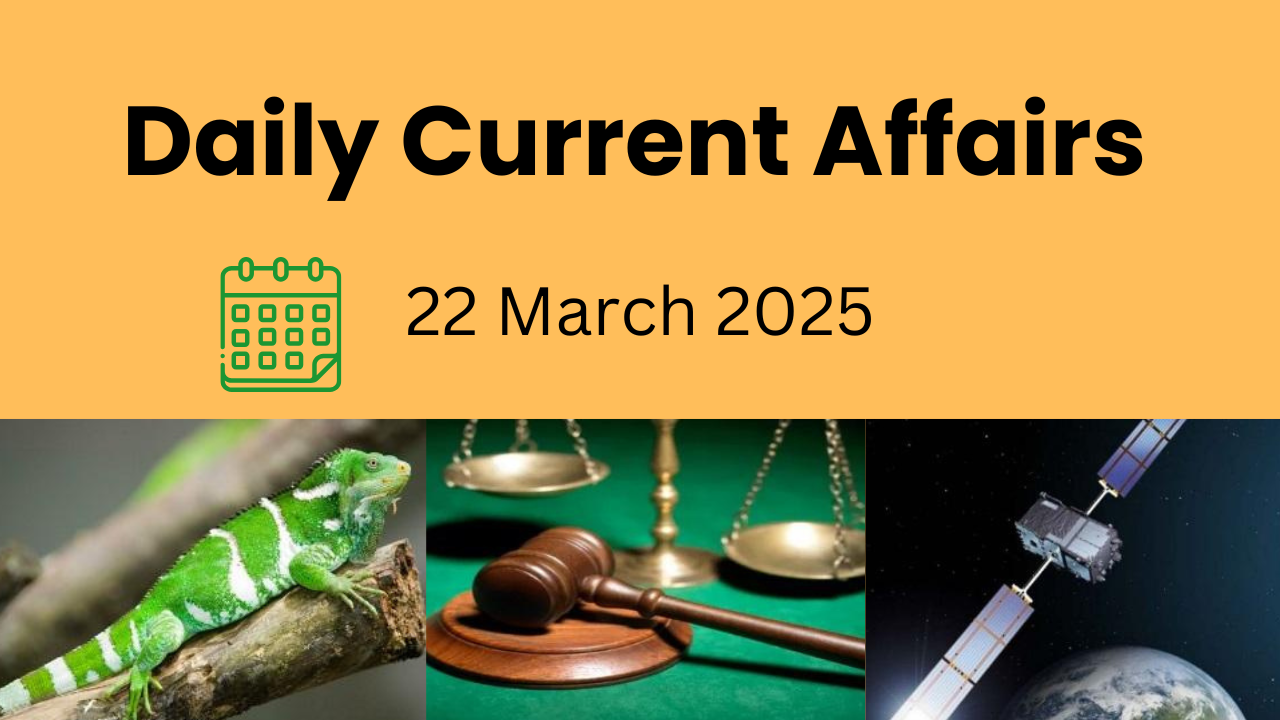1. India’s Habitual Offender Laws: A Legacy of Discrimination
Context: In a recent statement in Parliament, the Government of India confirmed that laws declaring individuals as “habitual offenders” are still active in 14 states and Union Territories. Despite Supreme Court interventions questioning the constitutionality of these laws, they continue to disproportionately affect marginalized communities.
Understanding Habitual Offender Laws:
Habitual offender laws in India target individuals repeatedly convicted of certain crimes, aiming to monitor and control them. While initially introduced to curb recidivism, these laws have come under severe criticism for perpetuating discrimination—particularly against denotified, nomadic, and semi-nomadic tribes (DNTs, NTs, SNTs) that were historically labeled as “criminal tribes” during British colonial rule.
The Historical Background: From “Criminal Tribes” to “Habitual Offenders”
The origins of these laws can be traced back to colonial-era legislation:
- Regulation XXII (1793) gave magistrates the authority to imprison or force labor on certain communities based on mere suspicion.
- This evolved into the Criminal Tribes Act (CTA) of 1871, which declared entire communities as “criminal by birth”.
- In 1924, the CTA was extended across colonial India.
After independence, the CTA was repealed in 1952, and communities were officially denotified. However, the introduction of Habitual Offender Acts in various states continued the cycle of targeting these communities, despite the change in legal terminology.
Supreme Court’s Intervention and Recent Legal Developments:
In October 2024, the Supreme Court of India raised concerns over the use of habitual offender classifications, particularly in the context of caste-based discrimination in jails. Led by Chief Justice D.Y. Chandrachud, the court emphasized that:
“A whole community ought not to have either been declared a criminal tribe in the past or a habitual offender in the present.”
The Supreme Court urged states to critically review the application of these laws, which have been misused to target entire communities.
Crimes Under the Habitual Offender Classification:
State laws define habitual offenders based on prior convictions for certain crimes, including:
- Being a thug
- Belonging to a gang of dacoits
- Living on the earnings of prostitution
- Various forms of “lurking” or suspicious activity
These laws often involve registering individuals under surveillance, echoing practices from the Criminal Tribes Act, where marginalized communities were routinely targeted.
Impact on Denotified and Nomadic Tribes (DNTs, NTs, SNTs):
Despite being officially denotified, DNTs remain heavily stigmatized and continue to face:
- Police surveillance
- Social ostracization
- Exclusion from education, employment, and social integration
The custodial death of Budhan Sabar, a member of a denotified tribe in 1998, sparked widespread outrage and led to the formation of the Denotified and Nomadic Tribes Rights Action Group (DNT-RAG). The National Human Rights Commission (NHRC) and international bodies like the United Nations Committee on the Elimination of Racial Discrimination have urged India to repeal these laws, citing their continued discriminatory impact.
Current Status of the Laws Across States:
The Supreme Court’s observations have prompted mixed reactions from states:
- Punjab and Odisha report no active use of the habitual offender law in recent years.
- Andhra Pradesh has no inmates currently under this classification.
- Gujarat and Goa support retaining the law, claiming it isn’t used to target DNTs.
- Uttar Pradesh has integrated these provisions into its Goondas Act.
- Delhi leads in the application of this law, with 21.5% of convicts categorized as habitual offenders (according to NCRB 2022).
The Need for Repeal:
Critics of habitual offender laws argue that:
- They perpetuate colonial-era stigma and discrimination.
- They facilitate targeted policing of marginalized communities.
- They violate fundamental rights, including equality (Article 14) and freedom of movement (Article 19).
- They contradict India’s commitments to non-discrimination under international human rights law.
Repealing these laws across the country would be a crucial step toward justice and inclusion for denotified, nomadic, and semi-nomadic tribes.
Conclusion: A Call for Justice and Equality
While habitual offender laws may appear neutral on paper, their colonial legacy and discriminatory enforcement have made them tools of oppression against vulnerable communities. With ongoing judicial scrutiny and numerous reports recommending their repeal, it is high time for a nationwide review and repeal of these outdated laws.To truly empower denotified and nomadic tribes, India must not only reform its policies but also dismantle the inherited prejudices embedded within its legal system.
2. India’s Looming Power Crisis: Challenges & Solutions in Renewable Energy
Context: India is facing an increasing risk of power shortages due to the rapid expansion of renewable energy without adequate storage systems. With peak electricity demand expected to hit 270 GW this summer, the power grid is under immense strain. The decline in thermal power investments over the last decade has further worsened the situation, leading to supply gaps during peak hours.
Challenges of Rapid Renewable Energy Growth:
Intermittency Issues of Solar & Wind Power
Unlike thermal power, which can be ramped up as needed, renewable sources like solar and wind are dependent on weather conditions. Solar power peaks during the afternoon, but electricity demand spikes in the evening, creating a supply-demand mismatch.
Limited Growth in Thermal Power Capacity:
India’s coal-based power capacity has grown only 7% since 2019-20, while renewable capacity has doubled from 72 GW to over 150 GW. Thermal plants are operating at high capacity utilization rates, making it challenging to scale up further.
Rising Power Demand & Grid Stability Concerns:
India’s Surging Electricity Demand:
- 2018-19: 169 GW
- 2024-25: 250 GW
- Summer 2025 Projection: 270 GW
With the expansion of renewables, grid stability has become a major challenge. Unpredictable renewable energy supply makes it harder to maintain a steady power supply during peak demand hours.
Power Shortage Projections for Summer 2025:
India’s grid operator warns of potential power shortages from April to October, with May and June identified as high-risk months.
Risk of Load Shedding & Supply Deficits:
- Loss of Load Probability (LOLP) in May:
- Best-case scenario: 19%
- Median scenario: 31% (1 in 3 chance of power shortages)
- LOLP in June:
- Ranges between 4.7% and 20.1%
LOLP measures the likelihood of power supply failing to meet demand, signaling the risk of blackouts.
The Urgent Need for Energy Storage Solutions:
Recognizing the challenge of intermittent renewables, the Central Electricity Authority (CEA) has emphasized the need for energy storage systems.
Current Storage Capacity vs. Renewable Growth:
- Total Renewable Energy Capacity: 200 GW+
- Installed Energy Storage Capacity:
- Pumped Storage Plants (PSP): 4.75 GW
- Battery Energy Storage Systems (BESS): 0.11 GW
Without rapid deployment of energy storage, power shortages will continue to worsen during peak hours.
Reviving Thermal Power to Stabilize Supply:
To address the crisis, the National Load Despatch Centre (NLDC) has recommended invoking Section 11 of the Electricity Act, 2003, which mandates higher operational levels for imported coal-based plants.
The Hidden Costs of Renewable Energy
- Aging thermal units are being kept on standby to manage power intermittency, leading to higher costs.
- The assumption that renewables have reached cost parity with thermal power is misleading. Factoring in standby thermal power nearly doubles the cost of renewable electricity.
Corrective Measures & Future Roadmap:
Recognizing past policy missteps, the government is taking corrective actions, including:
- Scaling up nuclear power capacity
- Expanding thermal power projects
- Importing coal to restart idle plants
- Mandating energy storage for new solar projects
These steps aim to strengthen India’s power grid, ensuring stable electricity supply and reducing blackout risks during peak demand periods.
Conclusion:
India’s ambitious push for renewable energy is admirable, but without sufficient storage solutions and thermal backup, the country risks severe power shortages. A balanced approach—integrating renewables with energy storage and thermal power—is essential to ensure long-term energy security.
3. World Happiness Report 2025: India’s Ranking Improves but Still Behind Pakistan
Context: The World Happiness Report 2025, released by the Wellbeing Research Centre at the University of Oxford, once again crowns Finland as the world’s happiest country for the eighth consecutive year.
India’s Performance in the Happiness Rankings:
India has shown consistent improvement over the past three years, moving up to 118th place out of 147 countries, compared to 126th last year. However, despite its stronger economy and governance, India continues to rank below Pakistan (109th place) in overall happiness.
How Are the Rankings Determined?
The rankings are based on Gallup World Poll surveys and the UN Sustainable Development Solutions Network, using responses from people rating their lives on a 0-10 scale (Cantril Ladder method).
Key Factors Influencing Happiness Scores:
- GDP per Capita
- Healthy Life Expectancy
- Social Support
- Freedom to Make Life Choices
- Generosity
- Perception of Corruption
The report uses a three-year average (2022-2024) to ensure accuracy.
Global Highlights: Who’s Happiest & Who’s Not?
Top-Ranked Countries:
- Nordic Nations Lead: Finland, Denmark, Iceland, and Sweden hold the top four positions.
- Surprise Entries: Costa Rica (6th) and Mexico (10th) break into the top 10.
- Israel (8th) remains in the top tier despite ongoing conflicts.
Declining Happiness in the West:
- United States (24th): Fell from 11th (2012) due to increased social isolation.
- United Kingdom (23rd): Records its lowest happiness level since 2017.
Least Happy Countries:
- Afghanistan remains at the bottom, with severe challenges for women.
- Sierra Leone and Lebanon follow as the second and third least happy nations.
- Global Social Support Decline: 19% of young adults report having no one to rely on.
India’s Performance Breakdown:
- Improved Happiness Score: 4.389 (out of 10), up from 4.054 last year.
- Ranking in Social Indicators:
- 57th in donations
- 10th in volunteering
- 74th in helping strangers
- Wallet Return Rates: Ranked 115th (by neighbor), 86th (by stranger), 93rd (by police)
Why is India Behind Pakistan Despite Economic Strength?
India outperforms Pakistan in key areas:
- Higher Per Capita Income: India – $2,480.8, Pakistan – $1,365.3
- Better Life Expectancy: India – 58.1 years, Pakistan – 56.9 years
- Lower Corruption Perception: India – 96th, Pakistan – 135th
Yet, happiness isn’t just about wealth. The report emphasizes social trust, connections, and emotional well-being over material prosperity.
Final Thoughts:
India’s steady rise in happiness rankings reflects progress, but the report highlights the power of social bonds and trust in shaping national well-being. As Gallup CEO Jon Clifton states, “Happiness isn’t just about money or growth—it’s about knowing people have your back.”
To create happier societies, we must invest in trust, relationships, and emotional well-being, alongside economic development.
4. GPS Spoofing: A Rising Cyber Threat
Context: Between November 2023 and February 2025, as many as 465 cases of GPS interference and spoofing have been reported near India’s border regions, particularly in Amritsar and Jammu, according to recent government data.
This growing cyber threat highlights the vulnerability of critical navigation systems, which are essential for military operations, aviation, maritime security, and civilian transportation.
What is a Spoofing Attack?
A spoofing attack is a cyberattack technique where fraudulent data is sent to a system to deceive it into accepting false information as legitimate.
Common Types of Spoofing Attacks:
- GPS Spoofing – Manipulating GPS signals to alter location data.
- IP Spoofing – Hiding the attacker’s real IP address, often used in Distributed Denial of Service (DDoS) attacks.
- Caller ID & SMS Spoofing – Faking caller ID information to mislead recipients.
- Email Spoofing – Sending emails that appear to come from a trusted source, commonly used in phishing attacks.
Understanding GPS Spoofing:
GPS spoofing involves the transmission of fake GPS signals to mislead GPS-enabled devices into believing they are in a different location. This can have serious consequences, especially for:
- Military and Defense – Disrupting enemy navigation and surveillance.
- Aviation & Maritime Transport – Misguiding flights or ships, leading to accidents.
- Financial Transactions – Some banking systems use GPS for location-based authentication.
- Drones & Autonomous Vehicles – Causing drones and self-driving cars to lose their way.
How Does GPS Spoofing Work?
GPS signals from satellites are inherently weak, making them susceptible to interference. Attackers exploit this weakness in the following way:
- Signal Analysis – The attacker studies the victim’s GPS setup, including the type of signals used.
- Signal Transmission – Fake GPS signals, mimicking real ones, are broadcasted.
- Overpowering Genuine Signals – Since the counterfeit signals are stronger, the receiver mistakenly prioritizes them.
- Location Manipulation – The affected GPS receiver displays an incorrect position, leading to navigation errors.
Real-World Examples of GPS Spoofing:
- 2019 – Black Sea Incident: Over 20 ships reported false GPS locations, causing confusion.
- 2017 – Aviation Disruptions: NATO detected Russian GPS spoofing near Norway and Finland, affecting aircraft.
- 2020 – Pokemon Go Hackers: Gamers used GPS spoofing to fake their locations and gain advantages.
How to Defend Against GPS Spoofing?
With cyber threats evolving, it is crucial to adopt preventive measures against GPS spoofing:
- Use Encrypted GPS Signals – Advanced systems like M-code (for military use) offer better protection.
- Multi-Frequency GPS Receivers – Using multiple signals makes it harder for attackers to deceive the system.
- AI-Based Anomaly Detection – Machine learning algorithms can detect irregular GPS patterns.
- Backup Navigation Systems – Relying on inertial navigation systems (INS) and ground-based alternatives can help in case of spoofing.
Conclusion:
As technology advances, so do cyber threats. GPS spoofing is no longer a theoretical concern—it’s a real-world problem affecting national security, businesses, and everyday users. Strengthening defenses through encryption, AI, and alternative navigation methods is critical to countering this growing menace.
5. Iguanas: The Ancient Reptilian Wanderers
Context: Scientists have uncovered fascinating evidence of how iguanas managed to travel vast distances, making their way from the Americas to Fiji. These resilient reptiles likely rafted across oceans on floating vegetation, showcasing their adaptability and survival skills.
What Are Iguanas?
Iguanas are large, robust lizards predominantly found in tropical regions of the Americas. Their distinctive features include:
- Scaly skin adorned with rough warts and protective spines along their back.
- A unique dewlap (a flap of skin beneath their neck) used for communication and thermoregulation.
- Various color morphs, ranging from vibrant green to striking blue and muted grey shades.
Diet & Adaptability:
Despite their fierce appearance, iguanas are herbivores, primarily feeding on leaves, fruits, and flowers. They have successfully adapted to diverse ecosystems, thriving in rainforests, arid deserts, and even urban environments.
Geographic Range & Natural Habitat:
Where Are Iguanas Found?
- Native Regions: Spread across Central and South America, from Mexico to Paraguay and Brazil.
- Introduced Regions: Populations have been established in Florida, Hawaii, and the Caribbean islands due to human activity.
Did You Know?
- Largest Lizard in the USA – The green iguana holds the title of the biggest lizard species in the United States.
- Arboreal Creatures – Iguanas are tree-dwelling reptiles, rarely descending to the ground except for nesting.
Preferred Environments:
Iguanas can be found in various ecosystems, including:
- Forests & Rainforests – Thriving in the dense canopy.
- Rivers, Lakes & Coastal Waters – Excellent swimmers!
- Wetlands (Swamps) – Adapting to humid, marshy areas.
- Urban & Agricultural Areas – Displaying remarkable suburban adaptability.
Conservation Status: Are Iguanas at Risk?
According to the IUCN Red List, most iguana species are not currently threatened. However, some are protected under the CITES Appendix II, which regulates their international trade.
Threats to Iguana Populations:
- Overexploitation – Due to demand in the pet trade and leather industry.
- Habitat Destruction – Deforestation and urban expansion are major concerns.
Fun Fact!
- Some iguanas, like the marine iguana of the Galápagos Islands, can dive up to 30 feet underwater to graze on algae!
Iguanas continue to captivate scientists and nature lovers alike with their resilience, adaptability, and ancient lineage. These remarkable reptiles have thrived for millions of years, proving their place in the ever-changing natural world.
6. Suriname: The Hidden Gem of South America
Context: In a significant move to strengthen agricultural ties, India has provided $1 million worth of machinery to Suriname to enhance its passion fruit industry. This initiative aims to modernize the sector, increase production, and create new economic opportunities for local farmers.
Indian Diaspora: A Strong Cultural Bond
The Indian diaspora forms a substantial 27% of Suriname’s population, making it one of the most influential communities in the country. This connection dates back to the 19th century, when indentured laborers from India were brought to Suriname under Dutch colonial rule. Today, their cultural influence is evident in festivals, cuisine, and traditions across the nation.
Political and Geographical Insights:
A Unique Position in South America:
- Smallest Country in South America in terms of land area.
- Bordered by French Guiana (East), Brazil (South), and Guyana (West).
- Atlantic Ocean forms its northern boundary, providing a crucial maritime connection.
Suriname’s Diverse Landscape:
- Home to the Bakhuys Mountains and Van Asch Van Wijck Mountains.
- The Wilhelmina Mountains house Juliana Top, the highest peak in the country.
- Major rivers like the Suriname River, Maroni River, and Courantyne River are vital for transportation, irrigation, and biodiversity.
Did You Know?
- Over 90% of Suriname is covered in tropical rainforests, making it one of the most heavily forested nations in the world.
- The country is part of the Guiana Shield, a region rich in gold and bauxite reserves.
- Paramaribo, the capital, is a UNESCO World Heritage Site due to its well-preserved Dutch colonial architecture.
With growing international partnerships and a rich cultural heritage, Suriname continues to strengthen its position as a rising economic and environmental powerhouse in South America.




